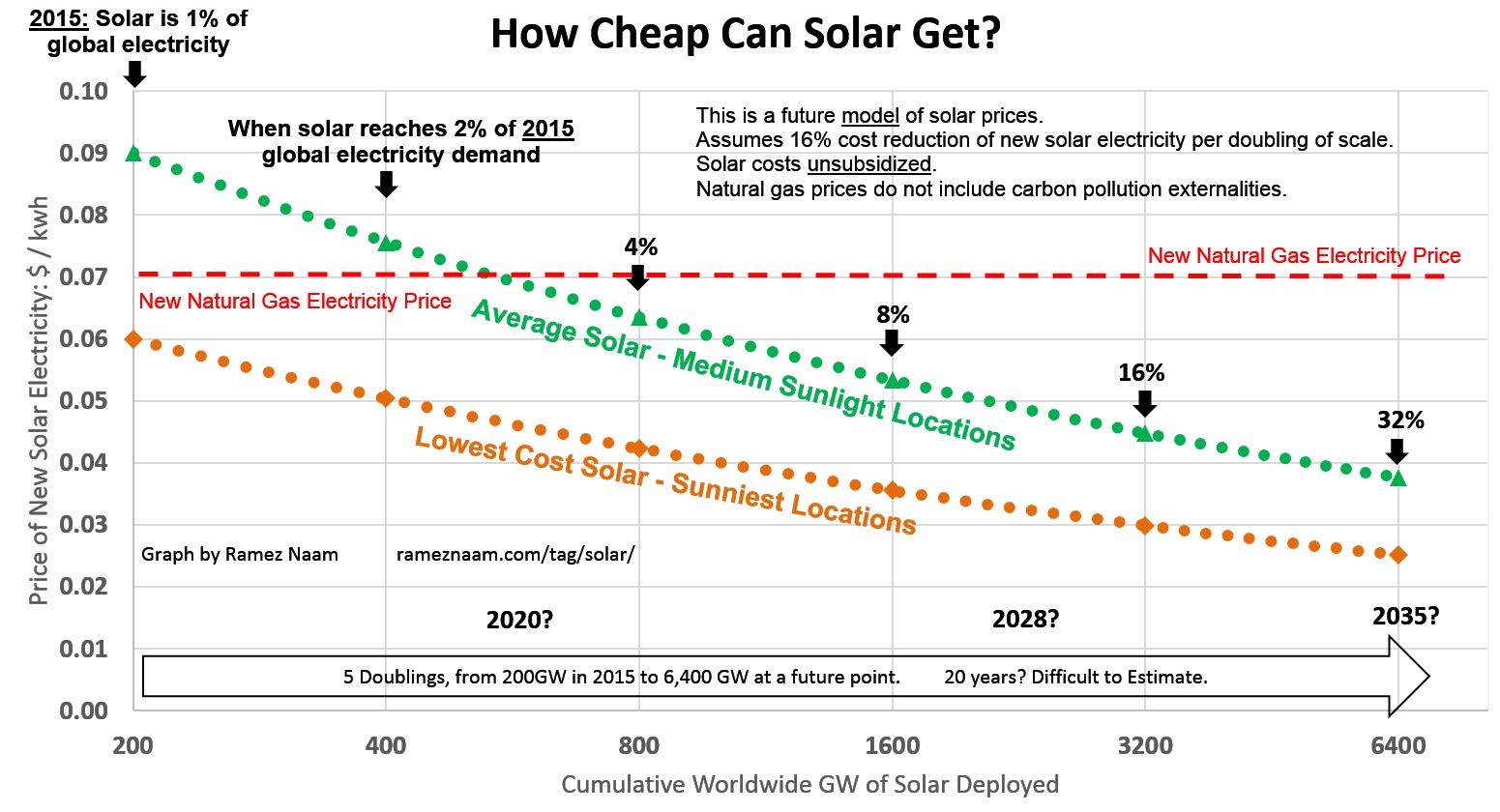New Record Low Solar Price in Abu Dhabi – Costs Plunging Faster Than Expected
The price of solar power – in the very sunniest locations in particular – is plunging faster than I expected. I’ve been talking for years now about the exponential decline of solar power prices. I’ve often been called a wide-eyed optimist. Here’s what those projections (based on historical learning rates) look like.
In fact, if anything, my forecasts were too conservative. The solar prices I expected have been smashed by bids in the Middle East and in Latin America. I will need to update the model above in a future post.
The latest record is an incredibly low bid of 2.42 cents / kwh solar electricity in Abu Dhabi. That is an unsubsidized price.
Let me put that in perspective. The cost of electricity from a new natural gas powerplant in the US is now estimated at 5.6 cents / kwh. (pdf link) That is with historically low natural gas prices in the US, which are far lower than the price of natural gas in the rest of the world.
This new bid in Abu Dhabi is less than half the price of electricity from a new natural gas plant.
What’s more, it’s less than the cost of the fuel burned in a natural gas plant to make electricity – without even considering the cost of building the plant in the first place.
The solar bid in Abu Dhabi is not just the cheapest solar power contract ever signed – it’s the cheapest contract for electricity ever signed, anywhere on planet earth, using any technology.
Nor is this bid a fluke. Three other bids in Abu Dhabi’s latest power auction came in at less than 3 cents / kwh:
| Bidder | Bid per MWh (in USD) |
| Masdar, EDF, PAL Technology | 25.4 |
| Tenaga, Phelan Energy | 25.9 |
| RWE, Belectric | 29.1 |
Nor is it limited to just Abu Dhabi.
In Chile, just a month ago, a new record low price for solar was set, at 2.91 cents / kwh. That record lasted less than 5 weeks.
In Mexico, the average price of new solar bids in April was 5.1 cents per kwh, and the cheapest solar bid in Mexico was 3.5 cents per kwh.
These price improvements are not coming primarily from the price of panels dropping. They’re coming from reductions in the total cost to deploy solar, increases in solar capacity factor, ever-lower operating costs, and fierce competition to win bids in the solar industry.
The solar industry is learning faster than expected.
Now, let’s watch and see if energy storage prices can drop as fast as solar.

